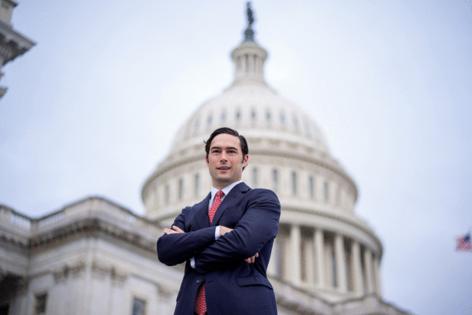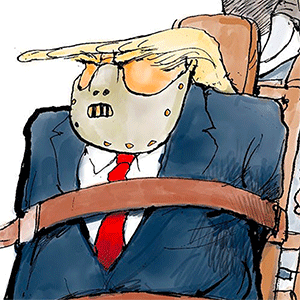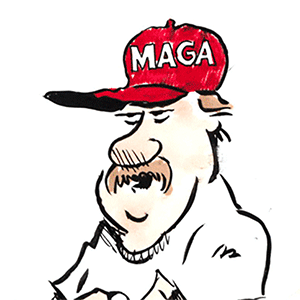Mid-decade congressional redistricting in Texas: What to know and how it works
Published in News & Features
FORT WORTH, Texas — It’s 2025, and Texas is redrawing its congressional districts. If the move seems unusual, that’s because it is — though it’s not unprecedented.
Lawmakers in Austin are meeting during a special legislative session during which congressional redistricting is among the closest-watched agenda items. Gov. Greg Abbott set the 30-day special session for Monday, adding more than a dozen other items to legislators’ to-do list.
The first of several redistricting hearings was being held Thursday in Austin, with upcoming hearings focused on North Texas scheduled for the coming days.
As maps take shape, here’s what to know and what redistricting could mean for North Texas.
The background this redistricting
Texas’ last major redistricting cycle was in 2021, following the 2020 U.S. Census. During that cycle, Texas gained two new congressional districts, neither of which were in North Texas.
Currently, 12 of Texas’ 38 congressional districts are represented by Democrats, including two that cover part of Tarrant County: U.S. House District 33 represented by Marc Veasey of Fort Worth and U.S. House District 30 represented by Rep. Jasmine Crockett of Dallas. (Crockett’s district covers just a sliver of Tarrant County’s eastern edge.)
The New York Times reported in June that the White House was pushing for redistricting in Texas. Since then, President Donald Trump has told reporters he’d like Republicans to pick up five congressional seats in Texas, Politico reported on July 15.
On July 7, U.S. Department of Justice sent a letter to Abbott and Texas Attorney General Ken Paxton contending that three Houston area districts and Veasey’s Fort Worth area district were racially gerrymandered “coalition districts,” and thus unconstitutional.
Only July 9, Abbott called a special session with redistricting on the agenda, citing “constitutional concerns raised by the U.S. Department of Justice.”
Democrats have questioned the validity of the Justice Department’s arguments.
“We’re not buying for one second that the timing of the Trump DOJ’s letter — sent just two days ago — was a coincidence,” Veasey said in a July 9 statement. “This is a coordinated political stunt, not a legal revelation. The claim that coalition districts like mine violate the Voting Rights Act and the 14th Amendment is laughable and offensive.”
How does redistricting work?
Typically, lawmakers in the Texas House and Senate will redraw Texas’ congressional, State Board of Education, state House and state Senate districts after the census is conducted to get the latest population tallies. This is done every 10 years.
Lawmakers will hold hearings where members of the public can testify and adopt maps much like they would other pieces of legislation, through votes on the House and Senate floor.
Public hearings have been scheduled in the House and Senate for the ongoing special session, though proposed maps hadn’t been released as of the morning of Thursday, July 24.
Is it normal for Texas to redistrict mid-decade?
While redistricting is traditionally done every 10 years, it’s not unheard of to redistrict mid-decade.
SMU political science professor Cal Jilson pointed to 2003, when the 78th Legislature took up redistricting in a regular session and three special sessions.
State Republicans gained control of the full Legislature after the 2002 election, and sought to pick up more seats in Congress. Democrats had previously controlled the House, and the congressional maps had been drawn by courts following the 2000 census.
“This time, these are Republican districts drawn just a couple of years ago – about four or five years ago – for Republican advantage,” Jillson said. “And to redraw them again, to try and squeeze out more Republican seats is seen as dangerous by some Republican incumbents.”
How redistricting could affect North Texas
Whether Veasey’s district is reshaped and how will become clearer once proposed congressional maps are published.
The district covers parts of Tarrant and Dallas counties, including portions of Arlington, Fort Worth, Farmers Branch, Grand Prairie and Irving.
North Texas is among the fastest growing parts of the state and was discussed as a possible contender for one of Texas’ two new congressional seats following populations gains in the 2020 census. Ultimately the districts were placed in the Austin and Houston areas.
Veasey’s district is “certainly in the cross hairs” as lawmakers redistrict in the coming weeks, Jillson said.
“But the ones that will come first are the districts in The Valley that have Hispanic Democrats who have seen their margins decline, as some Hispanics, particularly Hispanic men, moved over to vote for Trump and the Republicans in 2024,” Jillson said.
Democrats in the state Legislature and in Congress have criticized the mid-decade redistricting effort, but Republicans in Congress also have reasons for concern, Jillson said.
Districts considered solidly Republican now — those with margins where GOP incumbents won by 20 percentage points or more — could see those margins tighten as voters are moved into new districts, meaning closer races when facing Democrats on the ballot, Jillson said.
The incumbent is still likely to win the district, but in a good year for Democrats there could narrow loses for Republicans, Jillson said.
And changing the boundaries of even one congressional district creates a “ripple effect” of changes to other districts, Jillson said.
_______
©2025 Fort Worth Star-Telegram. Visit star-telegram.com. Distributed by Tribune Content Agency, LLC.







Comments